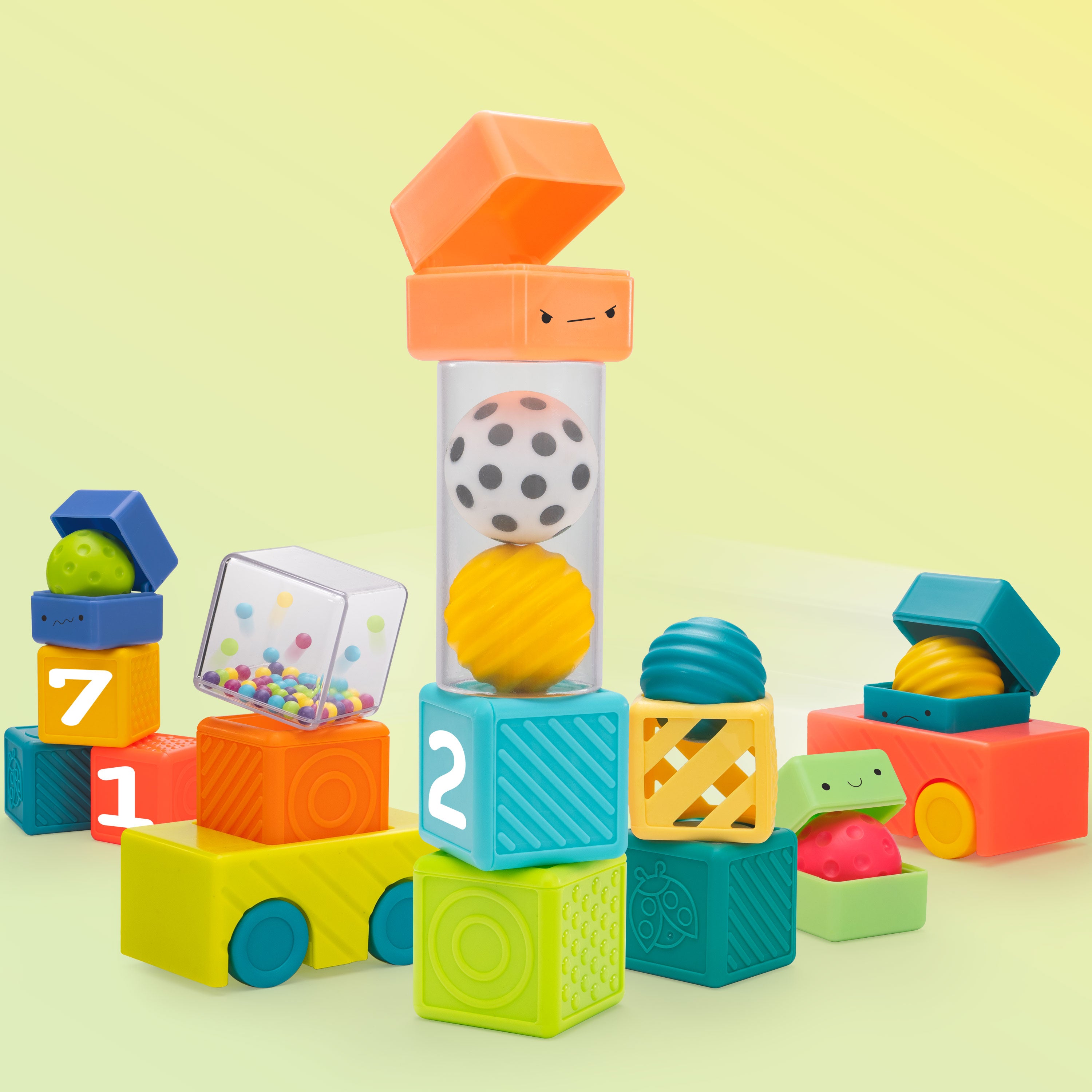Toys for Three Month Olds: 4 Things you Must Know
By Kaila Weingarten, MS Ed
Congrats! You made it through those first three months. Although your baby lost that newborn look, she’s finally responding with coos and smiles. She’s getting curious about you and the objects she sees. And he’s getting stronger and will learn to coordinate movements. It’s up to you now to encourage learning by talking and responding to your baby and providing age-appropriate toys. Yeah, I know. You mean I went through labor and birthing classes and that didn’t cover it all? Don’t worry, you’ll have the basics right here. Some of this your probably even doing, without knowing all the fancy words. So what’s your three month old up to? She’s learning to open and shut her fists, to start holding cool stuff like rattles and toys. Then she’ll realize that she can get her rattle to make noise. How cool is that! She’ll start exploring and reaching for her favorite toy. Use colorful toys with a variety of textures, shapes, and sizes. Show your baby her beloved toy and watch her turn to focus and follow, and reach to grab. You’ll be amazed at how her eye-hand coordination develops. Your baby learns through touch. The more textures and materials her skin is exposed to, the more she learns to discriminate between all those feelings. This helps develop both the tactile sensory system as well as fine motor skills. Toys with textures help so you don’t have to run around your house and give your baby a silk blouse, fur vest or piece of cotton.  Toys and mats are great for tummy time. The motor skills your baby learns during the first year, including rolling, pushing his chest off the ground, sitting, crawling, cruising, and walking, is the result of time spent playing on the floor. Make sure to place baby in various positions throughout the day - on his back, side, and tummy. Put toys in various positions to encourage movement. Place them over the middle of the body encourages hands to come together at mid-line (very important for brain development!). Set toys to the side encourages rolling to the side and, eventually, rolling all the way. Always supervise your infant and be ready to help if he gets tired or frustrated on the stomach. Mirrors can be used to encourage head control, social emotional skills, and self-awareness. Additionally, you can use a mirror for motivation, distraction, or entertainment during tummy time and when learning to sit. Make different facial expressions for your baby to imitate. Or just let your baby go gaga over the adorable reflection. There's a wide range of normal among babies. If you're concerned about your little one's vision, hearing, or development, talk with your doctor. What’s your baby’s favorite toy? Share in the comments!
Toys and mats are great for tummy time. The motor skills your baby learns during the first year, including rolling, pushing his chest off the ground, sitting, crawling, cruising, and walking, is the result of time spent playing on the floor. Make sure to place baby in various positions throughout the day - on his back, side, and tummy. Put toys in various positions to encourage movement. Place them over the middle of the body encourages hands to come together at mid-line (very important for brain development!). Set toys to the side encourages rolling to the side and, eventually, rolling all the way. Always supervise your infant and be ready to help if he gets tired or frustrated on the stomach. Mirrors can be used to encourage head control, social emotional skills, and self-awareness. Additionally, you can use a mirror for motivation, distraction, or entertainment during tummy time and when learning to sit. Make different facial expressions for your baby to imitate. Or just let your baby go gaga over the adorable reflection. There's a wide range of normal among babies. If you're concerned about your little one's vision, hearing, or development, talk with your doctor. What’s your baby’s favorite toy? Share in the comments!



Skwish!
Leave a comment